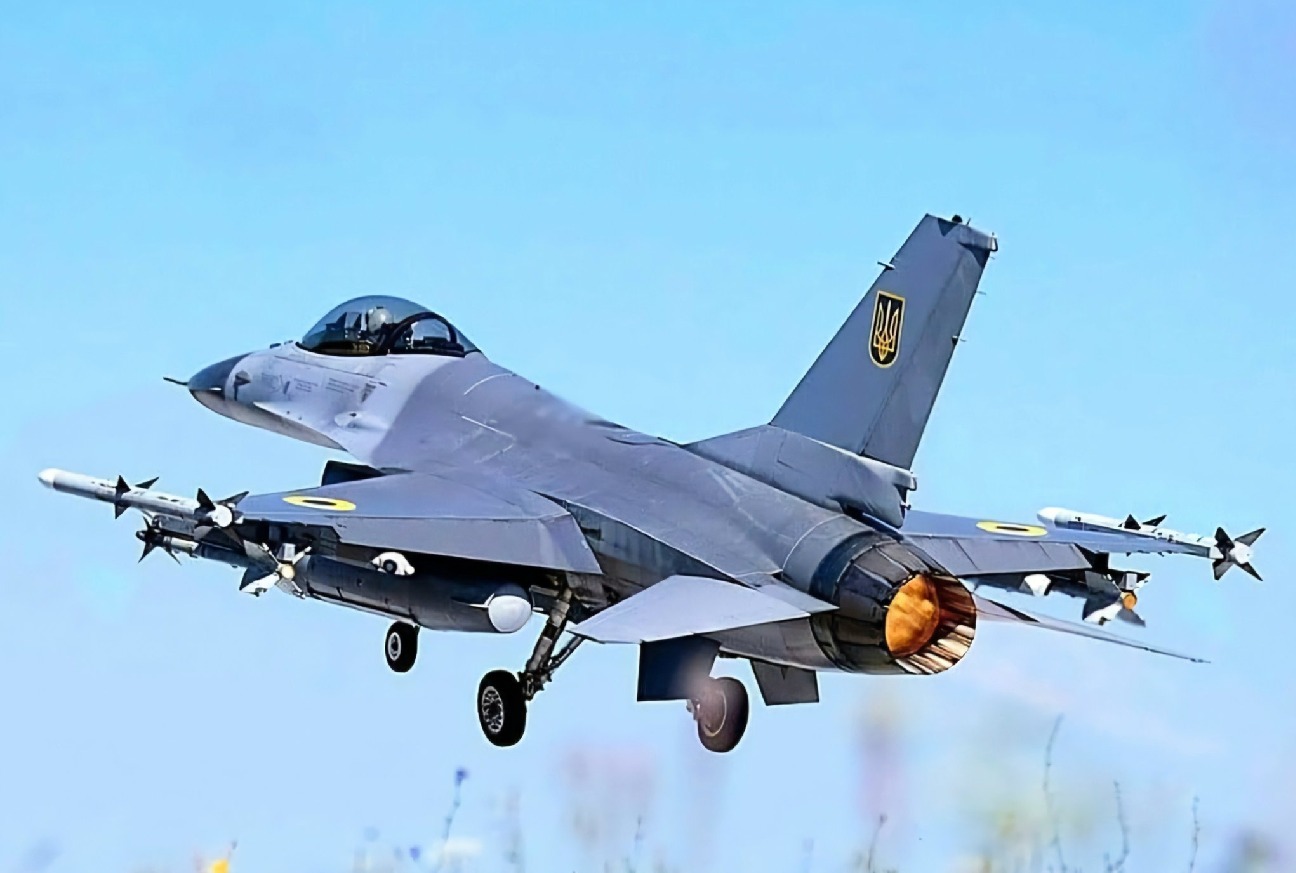The jet crashed on August 26 during a Russian drone and missile assault, resulting in the death of one of Ukraine’s most skilled pilots, Aleksey Mes.
The report, citing a Western official, said that the F-16 disappeared from radar shortly after a Russian missile exploded nearby, potentially damaging the aircraft or forcing the pilot into a perilous maneuver. The exact type of missile involved and why it detonated in the air rather than on impact remains unclear.
Ukrainian investigators are probing the incident, exploring all possibilities including a potential friendly fire scenario. A Ukrainian lawmaker previously claimed that the F-16 was downed by a Patriot missile system, another piece of Western-supplied weaponry.
The fallout from the crash extended beyond the immediate tragedy; the commander of Ukraine’s Air Force was dismissed shortly after the incident.
The crash raises concerns about the wisdom of Ukraine’s accelerated pilot training program. Since the start of the war, Ukraine had persistently lobbied Western nations to supply F-16s to bolster its outdated Soviet-era air fleet.
A select group of pilots eventually began training in Denmark, the US, and Romania. However, Ukraine remains months away from having a full squadron operational.
The training program focused on the specific missions intended for the F-16s, such as intercepting Russian cruise missiles. Despite this, a senior Western defense official told WSJ that the crash highlights the pitfalls of rushing such critical processes.
“The crash shows what happens when you try to rush things,” the official remarked.
Before the incident, there were concerns from the Danish government regarding the adequacy of the training provided to Ukrainian pilots, the report noted.
Typically, rookie F-16 pilots undergo an extensive training period, often taking up to a year with their unit before engaging in combat. In contrast, Ukrainian pilots were quickly thrust into “the fight right away, with at most a year of experience operating the aircraft.”
Moreover, the pilots, despite their extensive combat experience with older Soviet jets, faced challenges with the F-16’s advanced systems, compounded by language barriers. Many training materials were in English, a language not all Ukrainian pilots were fluent in, further complicating the transition.

Expert Explains Why Accelerated Pilot Training Poses Significant Risks
EurAsian Times reached out to Indian Air Force veteran Air Marshal Anil Chopra to understand why accelerated training for Ukrainian pilots has been questioned after the first loss of a US-supplied F-16 fighter jet.
Air Marshal Anil Chopra explained, “There are several aspects to training a pilot. The first is that you train a human being to become a pilot. The second stage is turning that pilot into a fighter pilot. The third stage is converting them to fly a specific type of aircraft.”
He pointed out, “In Ukraine’s case, the pilots sent for F-16 training were already fighter pilots, so that stage was complete. However, for every aircraft to really become operational, you must be able to safely take off and land. This isn’t very difficult because if you’re already a fighter pilot, learning to take off involves just understanding the specific checks and procedures. A certain amount of training is required, which typically takes a few months.”
“However, it takes further training to become fully operational, meaning ready for combat. There are armaments, electronics, warfare tactics, and many other aspects involved. Therefore, just training a pilot to fly an F-16 is not enough. If you rush through the whole process of flying the F-16 and becoming operational, there are significant risks,” Chopra added.
He mentioned that it was expected from the beginning that Ukraine would lose its F-16s in the early stages, either in the air or on the ground.
He further noted that during World War II, the majority of pilots who died perished within the first six months of their combat missions. However, the chances of survival increased significantly for those who made it past that period.
“Technology is also heavily involved. A pilot is not just a pilot; he is also a weapon system operator. It’s a very complex process to fly a fighter aircraft.”
“You can shorten the training by a small amount, but not too much. The training has to be thorough. If you go to war with minimal training, there is a high risk of getting shot down. The opponent likely has much more experience, and the platforms are of similar/superior capabilities,” Air Marshal Anil Chopra concluded.
- Contact the author at ashishmichel(at)gmail.com
- Follow EurAsian Times on Google News




